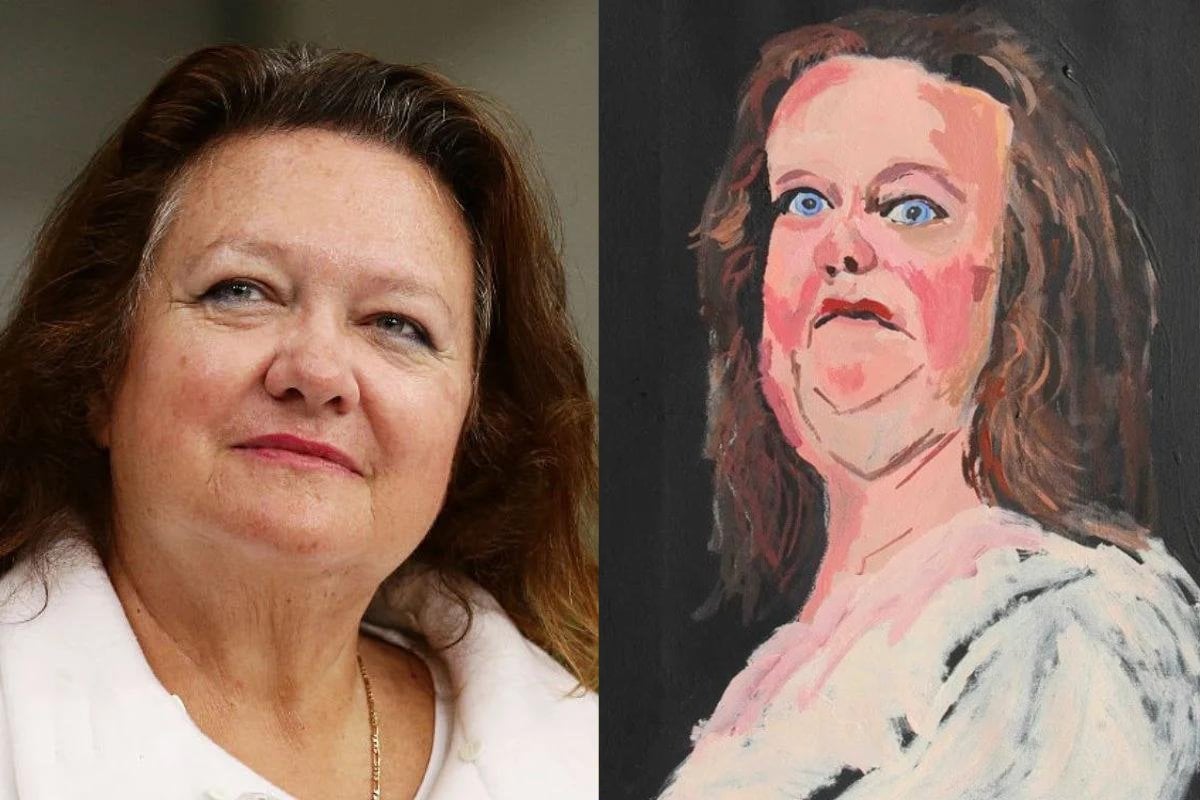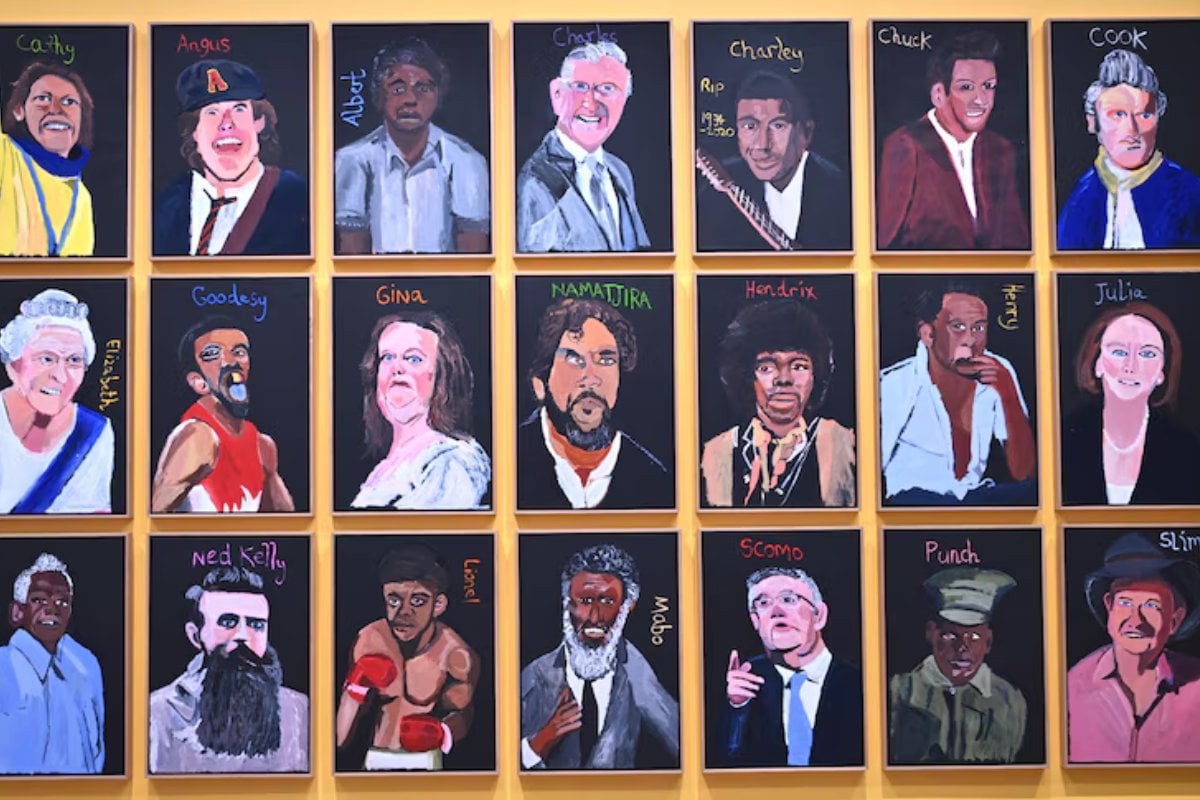
Australia's richest person, Gina Rinehart, has done a Barbra Streisand.
In her bid to remove a portrait of herself from the National Gallery of Australia (NGA) in Canberra, Rinehart has instead put the spotlight on the very portrait she wanted axed.
The mining magnate and heiress, estimated to be worth over $30 billion, reportedly wasn't a fan of the portrait painted by an Indigenous artist as part of his current exhibition at Australia's largest art museum.
Getting messier and messier by the day, here's the news story explained.
The exhibition in question.
Vincent Namatjira is the artist who painted Rinehart's portrait. He is a celebrated Indigenous portraitist who is well known for his satirical chronicles of Australian identity.
The exhibition is titled "Vincent Namatjira: Australia in colour," and it's available for the public to see at the NGA in Canberra until July 21.
Watch: the saga even made the news on The Late Show with Stephen Colbert. Post continues below.
It features several portraits of prominent figures relevant to Australian culture such as Rinehart, Cathy Freeman, Adam Goodes, the late Queen Elizabeth II, Scott Morrison, Julia Gillard, King Charles and many more. In Namatjira's typical style, the portraits are an exaggerated depiction of all the subjects' features.


Top Comments